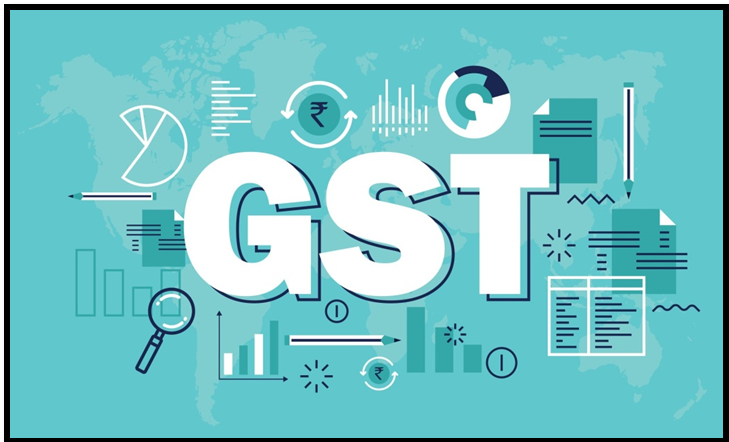GST REFORMS FOR A RESURGENT INDIA
Syllabus:
- GS-3- GDP growth rate , economic and overall development , GST, GST Council
Focus :
- The article focuses on the transformative impact of GST on India’s tax landscape, its achievements, unique credentials, and the critical need for further policy reforms to address existing challenges and support India’s economic growth and development.
Source - FE
Introduction
- Background: GST was introduced on July 1, 2017, transforming India’s tax landscape by consolidating 17 central and state taxes and 13 cesses.
- Achievements: GST has achieved significant milestones, including a tax buoyancy of over 1.4 in FY24, indicating its crucial role in India’s economic resurgence.
Unique Credentials of India’s GST
- Cooperative Fiscal Federalism: The GST Council, a new constitutional body, embodies cooperative fiscal federalism. It has held 53 meetings since September 2016, fostering a uniform, transparent, and technology-based GST regime.
- Taxpayer Base Expansion: The number of active GST taxpayers has more than doubled to over 6 million, thanks to simple and transparent onboarding processes.
- Technological Innovations: The introduction of E-Way Bills, real-time e-invoicing, and monthly GST collection data reporting has enhanced high-frequency economic indicators.
- Anti-Evasion Measures: The adoption of advanced data analytics and data-sharing protocols has led to significant action against GST evaders. For instance, over 6,074 cases of fraud amounting to nearly ₹2.01 trillion were unearthed in FY24.
Areas for Policy Reforms
Rate Structure Rationalization:
- Complexity: The multiplicity of rates and the inverted duty structure complicate the GST framework.
- Reform Need: The newly constituted Group of Ministers should address this issue to make Indian manufacturing competitive globally.
Inclusion of Excluded Sectors:
- Current Exclusions: Large sectors like petroleum/natural gas and real estate are not covered under GST, leading to tax cascading.
- Immediate Inclusion: Aviation turbine fuel and natural gas should be subsumed under GST to facilitate strategic investments and long-term planning.
Input Tax Credit (ITC) Restrictions:
- Sectoral Impact: Restrictions on ITC availing impact sectors like construction, telecom, and hospitality, causing working capital issues.
- Reform Need: Easing ITC restrictions would improve the business environment.
Audit and Investigation Burden:
- Compliance Costs: Heightened audit and investigation intensity increases compliance costs for pan-India entities.
- Reduction Needed: Streamlining these processes would reduce the burden on businesses.
Operationalization of GST Appellate Tribunal (GSTAT):
- Current Scenario: The absence of GSTAT forces taxpayers to seek remedies in courts, increasing litigation.
- Digital Processes: Operationalizing GSTAT with end-to-end digital processes is crucial for effective dispute resolution.
About GST COUNCIL-
|
Ushering in Tax Certainty
- Recent Developments: The 53rd GST Council meeting on June 22 introduced measures to enhance tax certainty, including steps to avoid huge retrospective tax demands.
- Dispute Mitigation: Measures like reducing the threshold for tax administration appeals and amnesty provisions for waiving interest and penalties up to FY21 will streamline the GST dispute resolution process.
- Anti-Profiteering Provisions: The sunset of anti-profiteering provisions by April 1, 2025, has been welcomed by India Inc.
Road Ahead
- Strategic Role of GST: As India aims to become the third-largest economy, GST will be pivotal in supporting growth and development.
- Collaborative and Innovative Reforms: Continuous reforms are necessary to make GST responsive, tech-driven, sustainable, and aligned with the goal of a developed India (Viksit Bharat).
Conclusion
- As India strives to become the third-largest economy, the Goods and Services Tax (GST) will play a pivotal role in this journey.
- While GST has already brought significant benefits, including enhanced tax compliance and a broader taxpayer base, there is a pressing need for ongoing reforms.
- Simplifying the rate structure, including excluded sectors, easing ITC restrictions, and operationalizing the GST Appellate Tribunal are essential steps.
Source:The Financial express
Associated Article :
Mains Practice Question :
GS-3
“Discuss the unique credentials and challenges of the Goods and Services Tax (GST) in India. In light of recent developments, what policy reforms are necessary to enhance the effectiveness of GST in supporting India’s economic growth?”(250 words)




